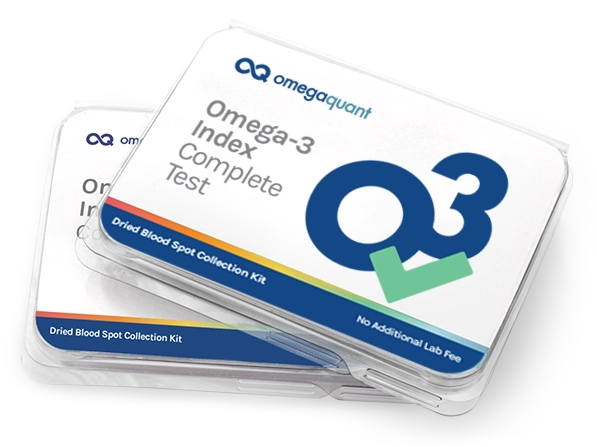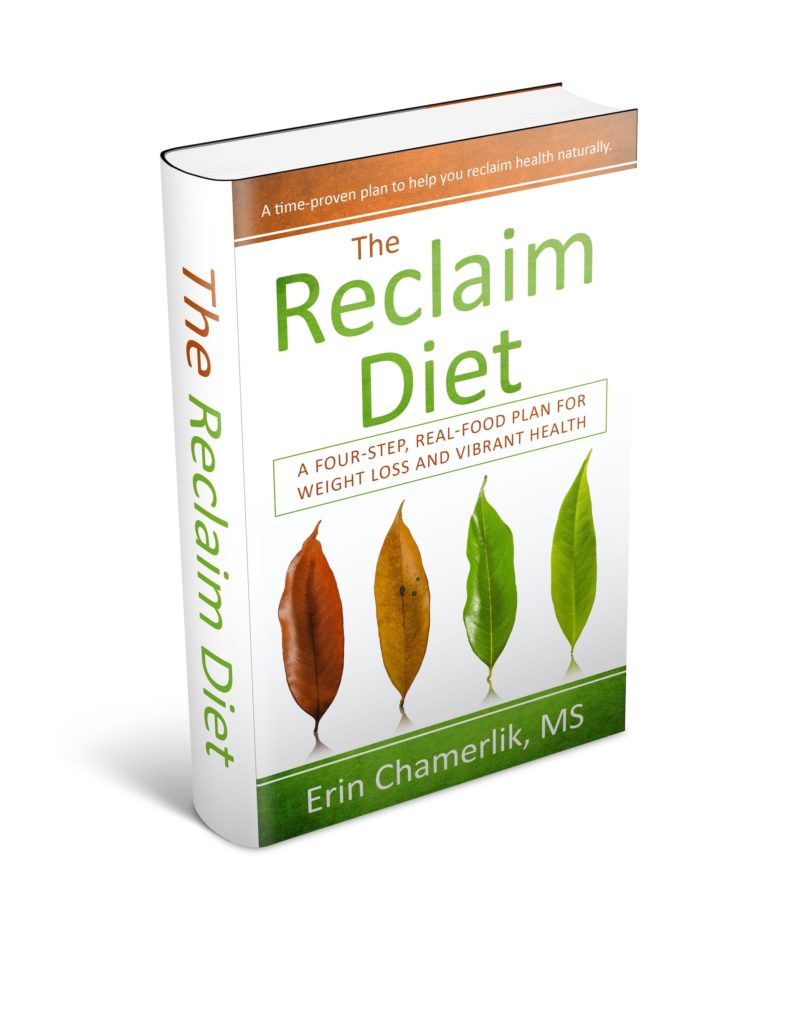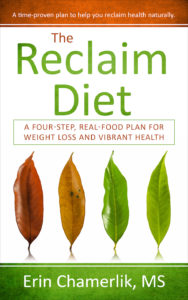
Why Fructose is a Concern
Fructose in the diet is NOT harmless. If you are thinking that fructose comes in fruit, you are right but fructose from fruit is not the problem. Fructose is found in fruit, vegetables and honey—real food. Fructose in real food is not harmful because of the fiber present in fruit and vegetables.
Honey is like pure sugar. It does not contain any fat and only trace amounts of protein and fiber. One tablespoon of honey contains 17g carbs—specifically sugar, glucose and fructose in equal amounts. Raw honey contains many important compounds including propolis, polyphenols, antioxidants, and vitamins and minerals, but it is important to keep honey consumption low. Balance the benefits of honey with the high amount of glucose and fructose contained in honey.
Our main concern is fructose found in sugar and corn syrup and high fructose corn syrup. Refined sugar is called sucrose. It is half glucose and half fructose. High-fructose corn syrup is about 55% (or more) fructose and 45% glucose.
Glucose and fructose are the most abundant sugars in our diet.
The human body handles glucose and fructose differently. Excess fructose consumption increasingly influences the global epidemics of diabetes mellitus, obesity, and the associated cardiometabolic risks.
Fructose activates profound metabolic consequences like:
- High cholesterol
- High triglycerides
- High uric acid
Excess Fructose has Dangerous Consequences When it Gets to the Liver.
- Glucose metabolizes directly throughout the body. Every cell in the body can use glucose for energy.
- Most cells in our body cannot metabolize fructose directly.
- Fructose metabolizes predominantly in the liver but also in the muscle, fat tissue, gut, and sperm.
- Fructose works to make glycogen and triglycerides in the liver. [source]
- When fructose gets to the liver there are dangerous consequences for the liver, arteries and heart.
- The liver makes FAT from fructose.
The Liver Uses Fructose to Make Fat
Lipogenesis is the process where the liver makes fat from fructose. When you eat enough fructose, fat accumulates in your liver cells leading to the condition called Nonalcoholic Fatty Liver Disease (NAFLD).
NAFLD was virtually unknown before 1980.
Fructose Makes You Eat More and Leads to Chronic Disease
When we consume fructose in processed food and sugary drinks it does not trigger satiety. It makes foods more palatable and stimulates a higher consumption of food—you will eat more. [source]
Excessive sugar and fructose consumption contributes to the epidemic of epidemic of cardiorenal disease (heart/kidney) and the incidence of obesity, high blood pressure, metabolic syndrome, type 2 diabetes, and kidney disease.[source]
Chronic metabolic diseases (including type 2 diabetes, hypertension, dyslipidemia, cardiovascular disease, cancer, dementia, polycystic ovarian disease, and non-alcoholic fatty liver disease) are now rampant throughout both the developed and developing world. These diseases are increasing in prevalence, severity, and as a percentage of total healthcare costs worldwide. Each of these chronic metabolic diseases are associated with dysfunctional mitochondrial energetics, resulting in the phenomenon of insulin resistance, which foments other altered cellular processes resulting in chronic disease.
https://www.ncbi.nlm.nih.gov/pmc/articles/PMC10097968/
Nonalcoholic fatty liver disease (NAFLD)
NAFLD is a leading cause of chronic liver disease and includes hepatic steatosis and nonalcoholic steatohepatitis (NASH), which can progress to liver fibrosis and cirrhosis [source]. Globally the rate of NAFLD is 32% of the adult population. NASH is the fastest-rising cause of liver cancer worldwide and is also the fastest-rising indication for liver transplantation in the United States [source].
The incidence of NAFLD in the US is about 45% [source] and according to Robert H Lustig, MD, 25% of all children have fatty liver disease. Fifty years ago if you had fatty liver you were an alcoholic.
Fructose Consumption is Growing Exponentially
In the early 1900s, fructose consumption came mostly from eating a small amount of fruit and vegetables and some honey. The average fructose consumption was about one ounce or 15 grams per day. Today Americans average 60 – 75 grams of fructose per day.
Since the 1970s fructose consumption has increased 30% according to a 2017 article published in Nutrients.
Foods Contributing to the High Intake of Fructose
Almost all of the fructose consumed today is coming from processed food and beverage with high amounts of refined sugars. Fruit juice is high in fructose (eat the whole fruit, skip the juice). Dried fruit is concentrated fructose. Agave syrup is a highly refined sweetener that is higher in fructose than most sweeteners.
Refined sugars are found in breakfast cereals, pastries, desserts, fast food, sodas, fruit drinks, salad dressing, pasta sauce, BBQ sauce, sweetened yogurt, ice cream, and other sweet foods and beverages.
The high consumption of sugary beverages rich in fructose is directly related to the development of obesity and its consequences, such as metabolic syndrome. What is concerning is that 88% of people with metabolic syndrome have do symptoms (Robert H. Lustig, MD)
Fatty Liver Lab tests:
- the liver enzyme: ALT should be less than 25 (not 40 like typical lab report states).
- uric acid (does your big toe hurt?) Uric acid is a byproduct of purine or fructose metabolism —sugar/HFCS—metabolism. High Uric acid can lead to high blood pressure and fatty liver.
- triglycerides, should be below 100 (how the liver processes carbs/sugar you eat). High triglycerides are showing you that you may be consuming too many carbs from processed food, grains and sugar.
- fasting insulin, best when it’s below 5 but no more than 10.
Go to DirectLabs.com and order these tests for yourself. Get Insulin, Complete Metabolic Panel (CMP-14) and Hemoglobin A1C for less than $90.
What to eat to be healthy and reverse fatty liver disease
Processed food and restaurant food are usually providing the unwanted, unhealthy foods.
Avoid:
- Omega-6 highly processed seed oils
- Sugar
- High fructose corn syrup
- Soft drinks (study: two 16-oz sodas a day increased liver and visceral fat over the 6 months of beverage intake)
- Sweetened drinks of all kinds, including fruit juice and sweetened coffee (stevia is fine). Limit alcohol consumption.
- A calorie is not a calorie. Sugar calories are the worst, because they turn to fat in the liver, driving insulin resistance.
- Ingested carbohydrates are a major stimulus for fatty liver
- Avoid boxes and bags of processed food (even gluten-free crackers, breads, chips, bars— these are processed carbs and inflammatory fats)
- Alcohol can be a problem of course but it’s usually the sugar, carbs, sweet drinks, junk oils
Eat Real Food
- Eat real food – PFV, clean animal protein, healthy fat, non-starchy vegetables. Follow the plan in my book, The Reclaim Diet. Meat/fish/chicken + healthy fat and non-starchy veg at meals.
- Stop eating between meals and after dinner so that your body isn’t having glucose and insulin surges all day long.
- Take high quality Omega-3 fats daily.
- Throw out junk oils: corn, canola, safflower, sunflower, peanut etc.
- Ditch the grains.
Key Supplements to Support Liver Health
Milk Thistle, Dandelion and Alpha-lipoic acid (all three are found in Liver SAP), NAC, B Complex (methylated), Magnesium and Omega-3s.
People with an optimal level of omega-3s in their blood tend to live longer, healthier lives – TEST at Home!
A recent article on Healthline identified 17 health benefits of the long-chain omega-3 fatty acids EPA and DHA. These fatty acids were singled out for improving bone and joint health, as well as mental disorders and cognitive function, fighting inflammation, preventing cancer and reducing the symptoms of heart disease, all of which are major issues affecting aging individuals. Most of these things start happening when you get older in part because of genetics and lifestyle, but also because our bodies start slowing down, which affects the uptake and metabolism of key nutrients.
WebMD lists fatty fish among its top anti-aging foods. Why? Because fatty fish like salmon and mackerel contain the omega-3s EPA and DHA. These special fatty acids are found in each cell of the human body, and they serve very important functions such as keeping cell membranes flexible and healthy. The consequence of these functions are healthier tissues and organs, which translates to benefits like a healthy heart and brain as well as healthy skin, to name a few.
At Home Test for Omega-3s – Save 10% with coupon code below.

See all the testing options here, and use coupon code JWIJBI1QF7 at checkout for another 10% off.
OmegaQuant is an independent, CLIA-certified lab that offers Omega-3 Index, Prenatal DHA and Mother’s Milk DHA testing to researchers, clinicians and the public.
When you take an Omega-3 Index test it gives you a percentage, which is simply a measure of the amount of EPA and DHA in your blood. An Omega-3 Index of 8% or higher is ideal, the lowest risk zone. However, most people hover around 6% or below. And unfortunately in the US, most people are at 4% or below – the highest risk zone.
Raising your Omega-3 Index to the desirable zone of 8% will help ensure you are getting enough of the right omega-3s — EPA and DHA — to protect your health.

Get Better Wellness is reader supported. This post may contain affiliate links, which means that I may receive a small commission when you buy from links on this site. This is at no cost to you.
Recommended
-
Dandelion for Liver Support and Health BenefitsJuly 20th, 2024
-
Modified Citrus PectinJuly 11th, 2024
-
Bentonite Clay Mask for Face and ArmpitsJuly 8th, 2024
-
Two Supplements for Erectile DysfunctionJune 30th, 2024









